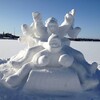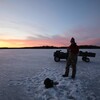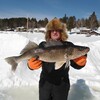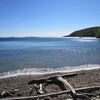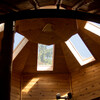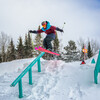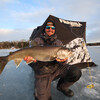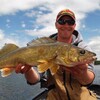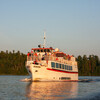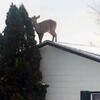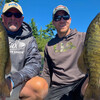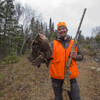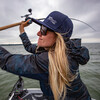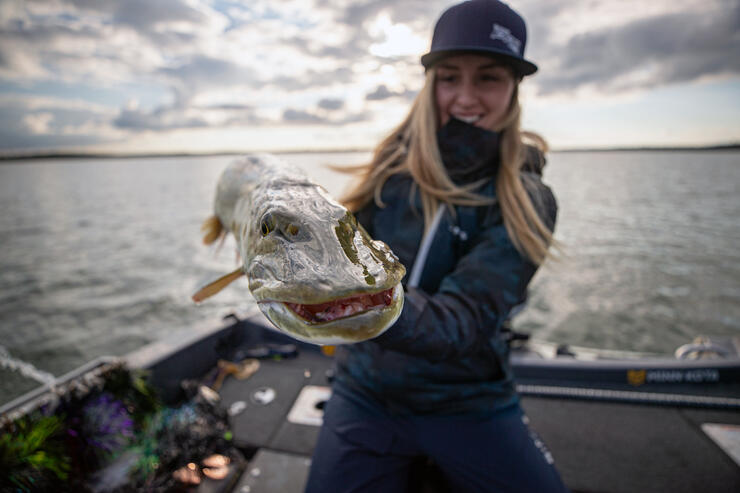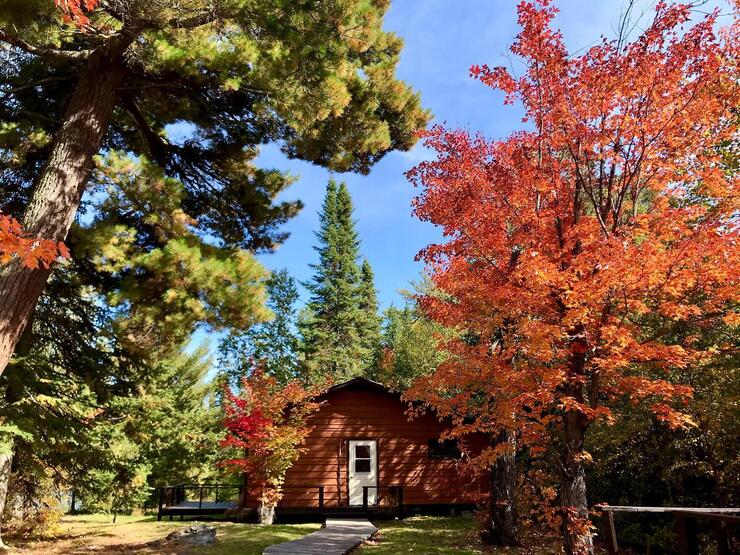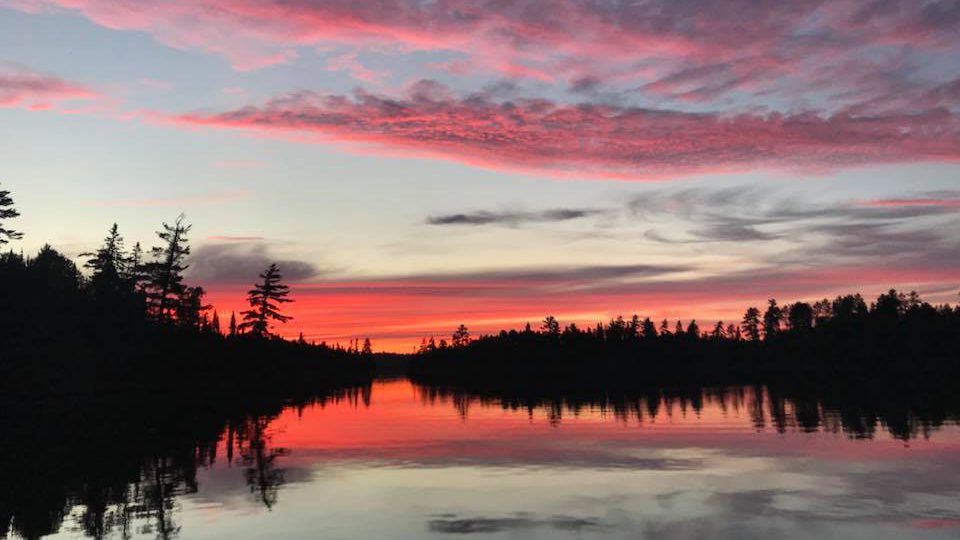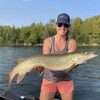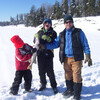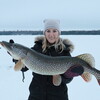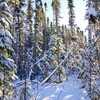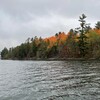
One Big Bite
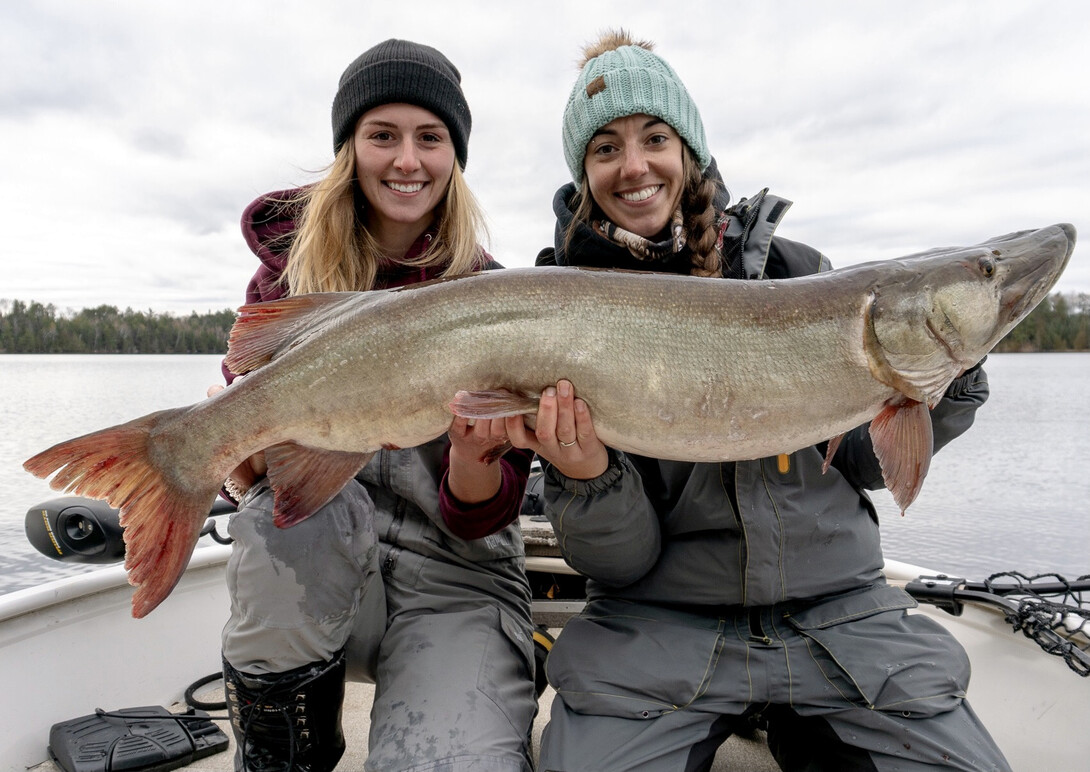
Fall Muskie Fishing in Sunset Country
The biggest mistake most muskie anglers can make before heading out on the water is the expectations they lay out for the fall bite. This bite especially is tough, both mentally and physically, but if you can battle through the elements and capitalize on your opportunity, it’s the feeling (and usually the fish) of a lifetime.
There are a couple of factors to take into consideration when it comes to muskie fishing on Pipestone Lake in the fall: finding the right structure and locating the baitfish.
Pipestone Lake is made up of a combination of breathtaking elements, above and below the water. With more than 20 miles of water to explore, Pipestone has many islands, small bays, inlets, rocky shorelines and points, reefs, weed beds, and lots of streams flowing in and out. One of the most popular attractions to Pipestone Lake is its depths as well as its lake trout fishing. When most muskie anglers hear the word trout waters, one thing comes to mind: big, girthy muskies.
Follow the baitfish!
As the season transitions from late summer to fall and the colder air and water temperatures arrive, it triggers the fish to pack on the weight for the upcoming months. This allows muskie anglers small windows of opportunity to capitalize on these feeding frenzies. So, if the natural instinct of a muskie is to start feeding before winter, where do you think they're heading? To find the bait fish!
Pipestone has a healthy resource of fatty bait fish made up of ciscos, whitefish, suckers, etc. The best way to target muskies here is to understand the baitfish. As the temperature drops and reaches the mid-40s, ciscos are moving into their spawning locations and you can bet the big fish won’t be far behind them if they’re not already there waiting. Most muskies during this time on Pipestone will be lurking in open water structures and near rocky points waiting for the baitfish to move in. Breaking down the lake into deep basin sections will help narrow down the best structure to post up on. Using your electronics and more specifically, your side-imaging, during the fall months will make locating structure much easier and more accurate. Find extended rock points in open water areas. The more complex the structure, the better.
Watch for the structure
The best way to learn the structure is to start from scratch. Look for rocky shorelines and extended points near open water access. There are a variety of rocky points that extend out, drop off and come back up to rock reefs throughout the open water system on Pipestone. Take some time to learn the structure by using your graphs before you even start casting or trolling. You want to have a good idea of what you’re casting at and more specifically, where the baitfish are on these reefs and points. Once you start marking solid bait balls, you can start to map out a pattern and it will be easier to narrow down the spots you’ll most likely find muskies. If you’re trolling shorelines and rocky points, look for sand or gravel inlets on your side imaging where the ciscos are likely headed to spawn!
For the majority of these open-water structures on Pipestone, you’re looking for rock reefs that top off at about 15-25’ of water. If you’re new to fishing trout waters, don’t be afraid to see 50-100’ of water on your graph around these reefs–muskies relate to structure that has access to open water not only in the fall but all year round. As a predator, these fish will move in and out, stalking the baitfish and waiting for their opportunity to feed. With that in mind, consider fishing the structure in various depths. Whether you’re trolling or casting, one shallower (tighter) pass, and one deeper pass.
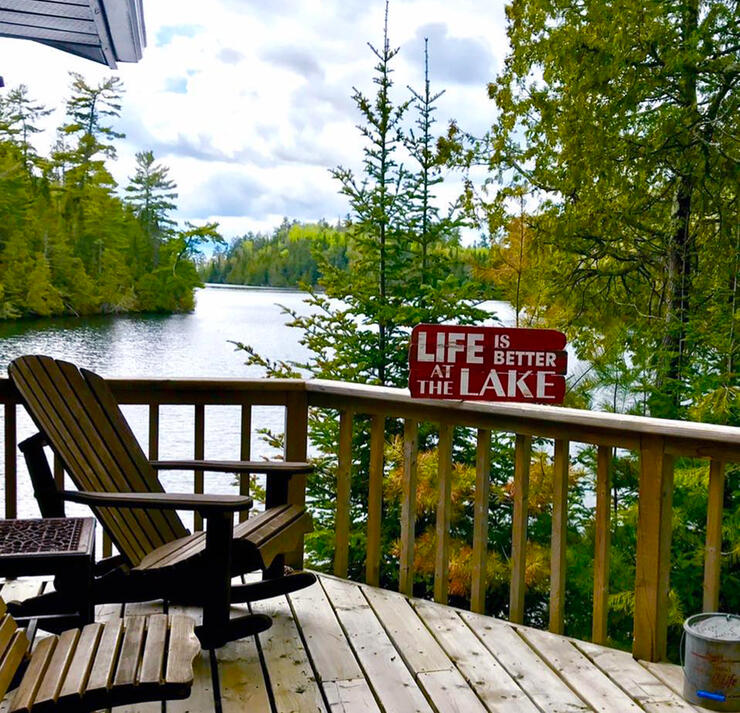
One of the most important things to remember about fall fishing a lake like Pipestone is to fish structure on repeat. Typically these baitfish areas are usually fairly condensed to a few small areas. The baitfish aren’t scattering to a ton of different locations to spawn, more than likely, they’re following one another to a common spawning area, so repeat your passes on a certain piece of structures multiple times throughout the day. Again, these are small windows of opportunity and if you leave a spot that you’re marking a ton of bait on, you may just miss your chance at a fish of a lifetime.
Cast or Troll?
A common question when it comes to fall fishing for muskie on Pipestone is: cast or troll? Honestly, it comes down to whichever you prefer, but trolling definitely allows you to cover more water, which increases your chances of getting bit. This advice can be used to relate to casting or trolling because the structure you’ll target will remain the same. If you’re considering fishing Pipestone this fall for muskies, the best piece of advice I could give anyone is, don’t overcomplicate it, especially if you’re new to this particular body of water. It can be very intimidating without contour maps and previous knowledge of the water, but it can be very rewarding if you trust your instincts and use your electronics. Again, it’s quite simple, find the bait, find the fish.
The best tackle
If you’re prepping for a trip to Pipestone this fall, here are a few baits to consider when loading up your tackle box. If you’re casting, big rubber baits are a must. Regular/Husky Medusas, Mag Dawgs, Pounders, and tubes. If you can tweak them to run a bit deeper, you’ll give yourself an even better opportunity to raise (and hopefully hook into) some deep-water monsters! Another great bait of choice to chuck is a 12 or 14” suick. The pull/pause action of these baits is a fall favourite for muskies. With cooler water temps, the pull action will entice a more lethargic (yet determined) muskie, while the pause action gives them an opportunity to strike, which is ultimately the goal! As mentioned previously, this is their pre-winter bulking before the snow flies, so even though muskies are feeding less frequently, they're more likely to go BIG! For the trolling bite, the baits that tend to have the most success are 13” grandmas, 12” slammers, 10/14” jakes, headlocks, and mattlocks.
As many know, time on the water is invaluable, the more you fish, the higher your chances are! With short days and cold temps, make sure you’re being observant of the patterns that you’re seeing on your fall fishing trip. It may not all come together until the very last day, but when that moment comes, be ready! Stay safe, stay warm, and keep the net close, you never know what’s lurking below.
Where is Pipestone Lake?
Pipestone Lake is located only one hour from the Ontario/Minnesota border and is located between Lake of the Woods to the west and Rainy Lake to the southeast. It's on the Pipestone/Clearwater Chain of lakes which consists of 11 lakes.
Cedar Island Lodge is nestled amongst the cedar and pine trees on a remote, private three-acre island on Pipestone Lake. Guests are either picked up at Sportsman's Landing on Clearwater Lake or will be put in there if bringing their own boat. Enjoy a scenic 17-mile boat ride crossing a mechanical portage into spectacular Pipestone Lake.
Find out more at cedarislandlodge.com or on Facebook or follow Jessie on Instagram.
Recommended Articles

Is the 1,400 Kilometre Drive to Northwest Ontario For a Fishing Trip Worth it?
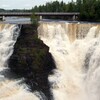
8 must-see waterfalls

6 Ways to Get Your 10,000 Steps This Fall

Top 5 Reasons You Should Be Fishing in Morson, Ontario

Discover The Winnipeg River

Enjoy Sunset Country's Fall Colours on Your Next Road Trip

Fishing in the Fall?

6 Reasons to Book a Fall Vacation to Sunset Country

10 Reasons to Avoid Ontario’s Sunset Country

Heading Across Canada?

A Guide to Sunset Country Museums
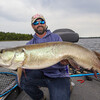
The Promised Land: Best Muskie Fishing in Ontario

Fall Fishing Tips
5 Essential Boreal Experiences in Ontario's Sunset Country

5 Obscure Facts About Northwestern Ontario: Were You Aware of These?

Great Food in Relatively Unknown Places
Outdoor Medicine

A Guide to Bringing Your Pets on Vacation to Canada

There's more than just fishing in the Red Lake Region

5 Amazing Sights You Can Only See By Boat

Going Fishing in Canada?

Going fishing in Ontario?

Outdoor Adventure in Ontario's Northern Paradise
Planning A Family Fishing Trip to Canada

Tips from a Fishing Legend

